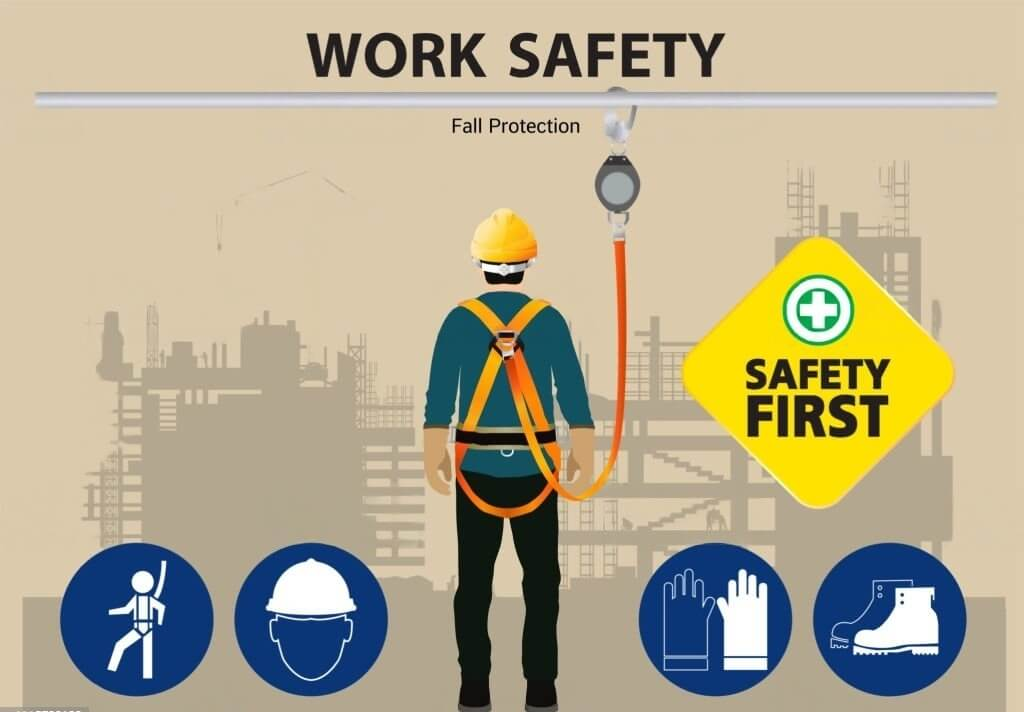Our Services
ADOSH SF V 4.0 JULY 2024 (Occupational Safety and Health Standard of Abu Dhabi)
The Occupational Safety and Health Administration (ADOSH) Safety and Health Framework (SF) is a comprehensive set of guidelines and standards developed to ensure the safety and well-being of workers in the United Arab Emirates (UAE). ADOSH SF was established to address the growing need for a unified approach to occupational safety and health management across various industries in the region. The framework encompasses a range of sectors, including construction, manufacturing, healthcare, and more, aiming to create a safer working environment for employees.
The history of ADOSH SF traces back to the increasing awareness of the importance of occupational safety and health in the UAE. Recognizing the need for a standardized system to manage workplace safety, ADOSH was launched in 2010 as an initiative by the Abu Dhabi Occupational Safety and Health Center (ADOSH), with the ultimate goal of enhancing safety standards and reducing workplace incidents. The ADOSH SF was subsequently introduced as a structured framework in 2014, outlining guidelines, regulations, and best practices to be implemented by organizations to ensure the safety of their workforce.
The ADOSH SF is continually updated to stay abreast of evolving industry trends, technological advancements, and emerging risks. It emphasizes a proactive approach to safety management, encouraging organizations to integrate safety into their day-to-day operations and foster a culture of safety awareness. ADOSH SF has played a pivotal role in transforming the occupational safety landscape in the UAE, contributing to the overall well-being of workers and promoting a safer and healthier work environment across diverse industries in the region.

ISO 45001:2018 (Occupational Health and Safety Management System)

ISO 45001:2018 is an international standard that focuses on occupational health and safety (OH&S) management systems. It provides a framework for organizations to establish, implement, maintain, and continually improve effective occupational health and safety practices. This standard was developed by the International Organization for Standardization (ISO) to help organizations create a safe and healthy work environment for their employees and other stakeholders, while also addressing the legal and regulatory requirements related to occupational health and safety.
The history of ISO 45001 can be traced back to the need for a globally recognized occupational health and safety standard. Prior to the development of ISO 45001, OHSAS 18001 was the predominant standard in this domain. However, in an effort to create a more universal and consistent approach, ISO initiated the development of a new standard. The development process involved input from various stakeholders, including government representatives, employers, workers, and industry experts, to ensure a comprehensive and inclusive perspective. ISO 45001 was officially published in March 2018, replacing OHSAS 18001 and providing organizations worldwide with a modern and adaptable framework for managing occupational health and safety.
ISO 45001:2018 is designed to be compatible with other management system standards, such as ISO 9001 (quality management) and ISO 14001 (environmental management). This compatibility allows organizations to integrate their occupational health and safety management system with other aspects of their overall management structure, promoting efficiency and consistency in their operations. The standard emphasizes a risk-based approach, continuous improvement, and the involvement of all levels of the organization in creating a culture of safety. By adopting ISO 45001, organizations demonstrate their commitment to protecting the well-being of their workforce and fostering a safe working environment.
ISO 9001:2015 (Quality Management System)
ISO 9001:2015 is an international standard for quality management systems (QMS), providing a framework for organizations to enhance customer satisfaction, improve internal processes, and continually improve overall performance. The International Organization for Standardization (ISO) first introduced the ISO 9001 standard in 1987, with subsequent revisions in 1994, 2000, 2008, and the latest update in 2015. The development of ISO 9001 reflects a global effort to establish a common understanding of quality management principles that organizations across different industries and sectors can adopt.
The history of ISO 9001 can be traced back to the British Standard BS 5750, which served as the precursor to the international standard. BS 5750 was initially developed to address the need for a standardized quality management system, particularly in the manufacturing sector. The success and acceptance of this standard led to its internationalization under the ISO umbrella, resulting in the birth of ISO 9001. Over the years, ISO 9001 has evolved to become a more flexible and adaptable framework, emphasizing risk-based thinking, leadership engagement, and a process approach to quality management.
ISO 9001:2015 places a strong emphasis on the context of the organization, risk-based thinking, and a process-oriented approach. It encourages organizations to identify and understand the internal and external factors that can impact their ability to deliver quality products or services. The standard also highlights the importance of leadership involvement in quality management, emphasizing a top-down commitment to continuous improvement. By adopting ISO 9001:2015, organizations can demonstrate their commitment to quality, enhance customer satisfaction, and drive continual improvement, ultimately contributing to their long-term success in a competitive global marketplace.

ISO 14001:2015 (Environmental Management System)

ISO 14001:2015 is an international standard that outlines the requirements for an environmental management system (EMS). It provides a framework for organizations to develop and implement effective environmental policies and procedures, with the aim of reducing their environmental impact and promoting sustainability. The standard is part of the ISO 14000 family of standards, which addresses various aspects of environmental management, including auditing, labeling, life cycle analysis, and communication.
The history of ISO 14001 dates back to the early 1990s when environmental concerns gained prominence globally. The International Organization for Standardization (ISO) recognized the need for a standardized approach to environmental management and, in 1996, published the first version of ISO 14001. Over the years, the standard has undergone revisions to stay relevant and responsive to changing environmental challenges. The most recent version, ISO 14001:2015, was published in September 2015, reflecting a shift towards a more strategic and integrated approach to environmental management. This revision emphasizes leadership, risk-based thinking, and a focus on the entire life cycle of products and services.
ISO 14001:2015 is applicable to organizations of all sizes and industries, providing a flexible and scalable framework that can be tailored to suit the specific context and requirements of each organization. By adopting ISO 14001, businesses demonstrate their commitment to environmental responsibility, enhance regulatory compliance, and gain a competitive edge in the market by meeting the expectations of environmentally conscious stakeholders. The standard’s emphasis on continuous improvement ensures that organizations adapt and evolve in response to environmental challenges, contributing to a more sustainable and resilient global business environment.
